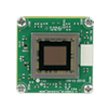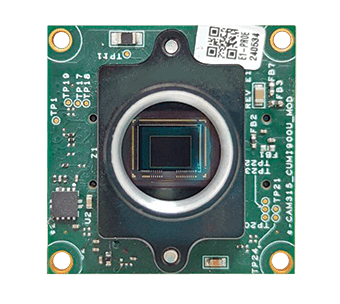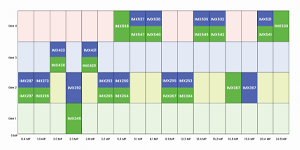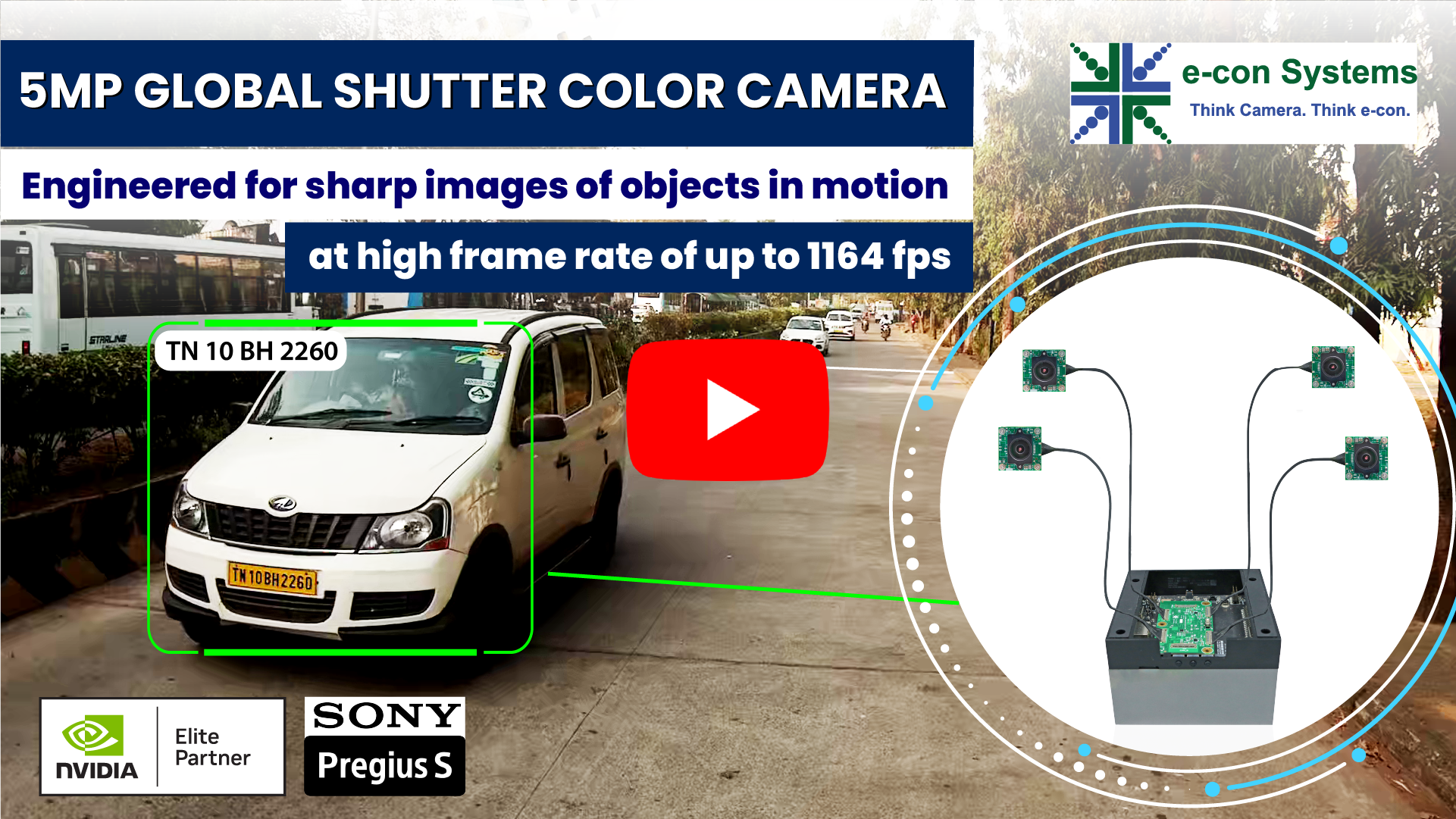Sony® Pregius Cameras
e-con Systems' Sony Pregius camera series utilizes the latest Sony Pregius sensors to provide exceptional image quality and accuracy. These sensors are known for their high image quality, high sensitivity, and low noise levels. With a wide range of resolutions, frame rates, and form factors, our cameras are designed to meet the diverse needs of your embedded applications.
Also, this series of cameras has global shutter efficiency to capture fast-moving objects without motion blur. Whether you need a camera for high-speed imaging in low-light conditions, or high resolution imaging, we have a camera to suit your needs.
These Sony® Pregius cameras are easy to integrate, supporting popular interfaces such as USB, MIPI CSI-2 and GMSL2. We also provide software tools and SDKs to help you get started quickly and easily.
Sony Pregius Image Sensor
Pregius which stands for Precision GS, is a technology that combines the low-noise performance of CCD (Charge-Coupled Device) sensors with the high-speed and high-precision characteristics of global shutter (GS) technology. The key to achieving high-speed performance in CMOS image sensors with Pregius technology lies in parallel processing. The advancement in multi-pixel capacity and readout speed significantly enhances productivity in various industrial applications. This technology also ensures motion distortion-free imaging.
Generation of Sony Pregius Technology
Sony introduced the first Pregius CMOS sensor, the IMX174 with 2.3 MP (1936 x 1216), in 2013. Currently, Sony offers four generations of Pregius CMOS sensors. The latest is called Sony Pregius S. Each generation offers different features and improvements, such as dynamic range, noise levels, and pixel size. The pixel size has evolved from 5.86 μm in the first generation to 3.45 μm in the second generation, 4.5 μm in the third generation, and 2.74 μm in the fourth generation.
Insights into Pregius S technology
The Pregius S, the fourth generation, combines back side illumination (BSI) with a stacked structure featuring 2.74 μm pixel size. This technology achieves faster frame rate by incorporating the back-illuminated structure. Its wider incident angle contributes to higher sensitivity, while enlarged metal wiring areas and signal processing circuits lead to improved speed and performance.
Key Specifications - Pregius Generation Comparison
The key specifications of the Sony Pregius sensor are listed in the table below.
| Pregius Generation | 1st Gen | 2nd Gen | 3rd Gen | 4th Gen |
|---|---|---|---|---|
| Pixel Size | 5.86µm | 3.45µm | 4.5µm | 2.74µm |
| Avg Saturation Capacity | 33000 e- | 10500 e- | 25000 e- | 9500 e- |
| Avg Read Noise | 7 e- | 2.3 e- | 5.5 e- | 2.1 e- |
| Avg Dynamic Range | 70 dB | 71 dB | 72 dB | 71 dB |
Pregius Generation Comparison
Understanding Pregius Sensors: Sizes and their Impacts, Image Quality and Megapixels
Pregius sensors come in different versions, each with its own features like saturation capacity, dynamic range, high sensitivity, temporal read noise, and quantum efficiency.
In the first generation, the IMX174 sensor offers 2.3MP at 166 FPS, while the IMX249 offers 2.3MP at 41 FPS, both featuring a higher pixel size of 5.86µm. Generally, if the pixel size is larger, the saturation capacity and temporal dark noise are higher. These sensors boast the highest average saturation capacity at 33,000e-. However, this comes with the trade-off of the highest temporal dark noise at 7e-.
In contrast, the fourth-generation sensors, from 5.1MP through 24.5MP characterized by the smallest pixel size, exhibit the lowest saturation capacity average (9,500e-) and the lowest temporal dark noise (2.1e-). It maintains a consistent dynamic range of approximately 70 dB across diverse pixel sizes in different generations.
The Pregius sensor family emerges as a versatile solution for various imaging requirements. With resolutions spanning from 0.4 MP to 31.4 MP, these sensors find application across diverse scenarios.
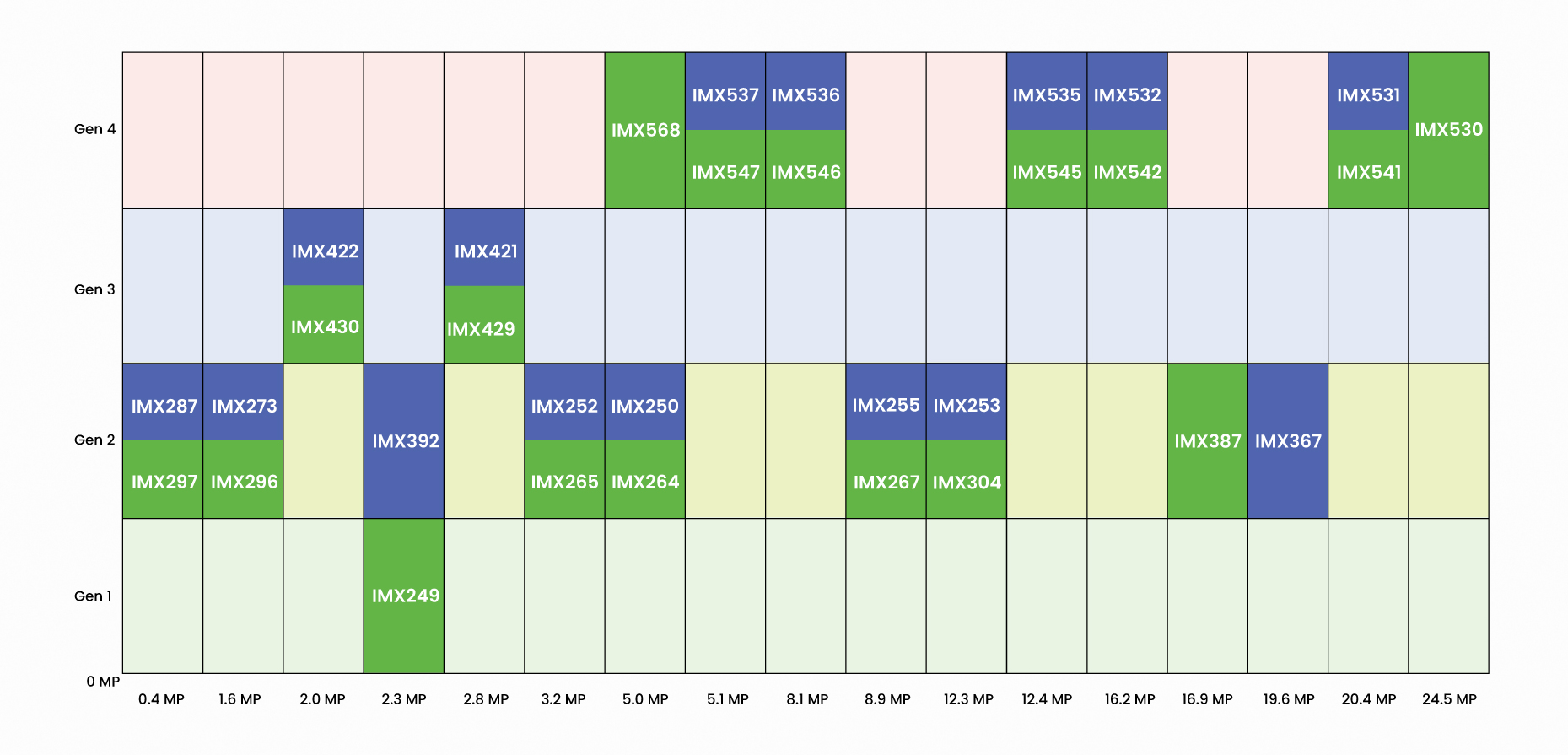

Global Shutter Efficiency
In scenarios where the target or camera is in motion, it is crucial for the captured images to be free from distortion. This distortion is referred to as rolling shutter artifacts, and it occurs as a result of the rolling shutter sensor exposing and reading out pixels one row at a time.
For an in-depth comparison, explore our Rolling Shutter vs. Global Shutter blog
In the Sony Pregius CMOS global shutter pixel pipeline, an analog memory node is placed between the photodiode and floating diffusion node. This innovative setup allows each photodiode to sense light simultaneously. Once the photodiodes complete their exposure, the electrons flow into the analog memory, freeing them for the following exposure. It is this process that enables the functionality of the CMOS global shutter, ensuring distortion-free imaging.
Better Light Sensitivity
In the 4th generation Pregius sensors, the distance between the microlens and the photodiode surface is much closer, resulting in a wider incident angle. Even with a reduction in pixel size, the 4th generation Pregius S sensors maintain a sensitivity comparable to their predecessors. This is made possible by their capacity to admit more light. Specifically, at low incident angles, the Pregius S captures up to 4 times more light, receiving 40% as much light as Sony's 2nd generation Pregius, which, in contrast, only receives 10% of the light directed to the pixel.
The 4th generation Pregius S sensors maintain comparable sensitivity as this admits more light. At low incident angles, the Pregius S captures up to 4 times more light, receiving 40% as much light as Sony's 2nd generation Pregius, which only receives 10% of the light reaching the pixel.
Related Blogs
Related Videos
Camera Products
Resources
Company
Help
Social
Copyright © e-con Systems® | Site Map
Language Preferences
Default is {currentLanguage}. Would you like to switch language?
You may not be able to access content or other services correctly without cookies. Know more



 Mr. Thomas Yoon
Mr. Thomas Yoon +82-10-5380-0313
+82-10-5380-0313




